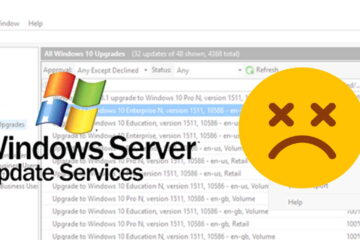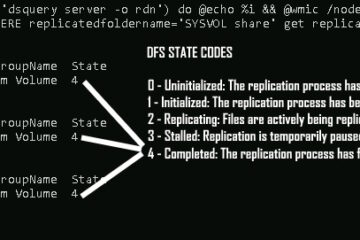The following list of things to know about Server 08 and Small Business Server 08 are based on my experiences and research. This list is mainly for my (and my tech’s) to keep track of tidbits. If you follow any of these items, you should be careful and backup your systems in advance, we accept no responsibility for these. And that gets us to our first tip/fix; what to do when you CAN’T backup your Server 2008.
- BACKUP FAILURE: As you likely already know, Server 2008 uses the crappy backup included in Vista. I have had major problems with both Server 08 Standard backups and Exchange LCR (Local Continuous Replication) backups. After working with Microsoft for weeks via email and the phone for days, I ended up with a third level SBS guy who nailed it in 30 minutes, add the following to your registry:[HKEY_LOCAL_MACHINE\SOFTWARE\Microsoft\EventSystem\{26c409cc-ae86-11d1-b616-00805fc79216}\EventClasses\{FAF53CC4-BD73-4E36-83F1-2B23F46E513E}-{00000000-0000-0000-0000-000000000000}-{00000000-0000-0000-0000-000000000000}]TypeLib=REG_EXPAND_SZ
Value = %systemroot%\system32\eventcls.dll
Even though all of the VSS (Volume Shadow Copy) writers appear to be functional… something is wrong and this fixes it.
FYI, The nut of my complaint about the new backup is that you can not backup files or folders… only partitions. It should be noted that you CAN restore Files and/or Folders. On the bright side, Server 2008 backup makes VHDs (Virtual Hard Disks) (see item 2).
- MOUNT A VHD: VHD ‘s (Virtual Hard Disks) can be mounted in Disk Manager… pretty cool stuff.
 P2V – PHYSICAL TO VIRTUAL CONVERSION: You might think that you can backup your hardware using the new backup, take the VHD’s to a Hyper-V server and make them a Virtual Machine… well you might be able to but the new machines would likely fail to boot because of the hardware changes and Microsoft will not support it. Sooooo, Microsoft has made System Center Virtual Machine Manager (SCVMM or just VMM) available HERE which is a click next install and the conversion to virtual is simply a thing of beauty… it just works. VMM demo is free for 180 days and does NOT hook your resulting VHD’s into VMM (i.e. it does NOT time bomb them… yaaaaa. I thought you might need System Center to get SCVMM to function, but you don’t.
P2V – PHYSICAL TO VIRTUAL CONVERSION: You might think that you can backup your hardware using the new backup, take the VHD’s to a Hyper-V server and make them a Virtual Machine… well you might be able to but the new machines would likely fail to boot because of the hardware changes and Microsoft will not support it. Sooooo, Microsoft has made System Center Virtual Machine Manager (SCVMM or just VMM) available HERE which is a click next install and the conversion to virtual is simply a thing of beauty… it just works. VMM demo is free for 180 days and does NOT hook your resulting VHD’s into VMM (i.e. it does NOT time bomb them… yaaaaa. I thought you might need System Center to get SCVMM to function, but you don’t. - INTEL NETWORK CARDS APPARENT FAILUIRE: After you install or upgrade to 2008 the machine all seems well. Then you reboot the server (for whatever reason) and your NIC shows as functional, but you just can’t see the network or the Internet… very odd. My experience with this has been over three companies with 4 servers running Server 2008 Standard and SBS and all of them have the same issue… you have to DISABLE then RE-ENABLE the cards to get them to function after a reboot… very odd. This has occurred on 80% of the reboots I have had in the last year… not good but easy to fix.
- VALIDATE THE INTEGRITY OF EXCHANGE 2007: If you have questions or problems with your Exchange 07 databases, you can easily validate them using the following procedure:
- Open Exchange Management Console, go to Server Configuration -> Mailbox.
- Dismount the Mailbox Database.
- Click Start, click Run, type cmd , and then click OK.
- Type the following command:cd c:\Program Files\Microsoft\Exchange Server\Bin
eseutil /mh ” C:\Program Files\Microsoft\Exchange Server\Mailbox\First
Storage Group\Mailbox Database.edb”Note: I assume the Exchange Server program files were installed in the
c:\Program Files\Microsoft\Exchange Server folder and the database is in
the C:\Program Files\Microsoft\Exchange Server\Mailbox\First Storage Group
folder. - Review the results of the consistency check. If a database is
consistent (state = clean shutdown), all the log files have been committed
to the information store. If the database is not consistent (state = dirty
shutdown), the database may not be corrupted. The log files may not have
been committed to the database yet. - If the state reports clean shutdown, move all the log files from all the
“First Storage Group” directories to a backup folder. - Re-Mount the databases.NOTE: I would like to take credit for this tidbit, but this was provided to me by a Microsoft Support Tech.
- HOW TO BACKUP HYPER-V VIRTUAL MACHINES: No… it does not work out of the box, so unless you buy a third party tool like Backup Exec, you will need to follow THIS article.
- BACKUP EXCHANGE 2007: By now, almost everyone knows that you can NOT backup Exchange 2007 with Windows Server 2008 Backup. This is unacceptable and while it has been promised (in official MS blogs) to be fixed in Exchange’s Service Pack 2. Sooooo whatchagonnado? Well you have three options:
- Shut down the Exchange services and copy the EDB database files to another location and then back them up. Not a good solution unless you can script it to run at 2am when no-one will notice the outage.
- Buy something like Symantec Backup Exec 12 or newer (no… Backup Exec 11 will not even install on Server 08).
- Copy the old NTBACKUP from your old server to the new 2008 server . Just take follow THESE instructions. If you are not sure how to run NTBackup against Exchange, read THIS. Also, THIS site suggests that you might be able to use NTBackup from a different server (i.e. running Server 2003) to backup your Exchange remotely.
- HOW TO MIGRATE SBS 2008 TO SBS 2008 (i.e. hardware change): Just following THIS article.
- HOW TO MIGRATE SERVER 2008 STANDARD TO SBS 2008: No, there is not licences upgrade (i.e. it saves you no money to have Server 08 and “upgrade” to SBS 2008) but there is a process to migrate your domain
- SBS 2008 & HYPER-V: Hyper-V is supported to RUN SBS 08 but not to be installed ON SBS 08 because Hyper-V will break DHCP. If you want to run Hyper-V, buy SBS Premium (cheapest way to get a Server 2008 licence) and run it on a different box.
- CONFIGURING UPDATES STAGE 3 OF 3: 0% COMPLETED, STUCK: Sometimes Windows (Vista/7/Server 2008/R2) gets stuck on CONFIGURING UPDATES after a reboot. Note that in my case a patch was stuck at 97% so don’t be convered about the % completed. While it is soooo enjoyable to panic, you don’t need to:
- boot from the installation disk DVD, choose REPAIR then DOS PROMPT
- go to C:\WINDOWS\WINSXS and delete (or rename PENDING.XML), and reboot
- undo changes to the registry using the following process (YES, you NEED to do this)
- Type regedit, and then press ENTER.
- Select HKEY_LOCAL_MACHINE.
- On the File menu, click Load Hive.
- Locate the following folder: C:\windows\system32\config\components
- When you are prompted for a name, type Offline_Components.
- In Registry Editor, locate and then delete the following registry subkey: HLKM\Offline Components\AdvancedInstallersNeedResolving HKLM\Offline Components\PendingXmlIdentifier
- see THIS kbase article for more details and yes, from experience, it also applies to Server 2008 (and I believe Server 08 R2).
- How to Backup IIS 7: In IIS 5 and IIS 6 you simply right clicked on the the virtual directory, selected ALL TASKS and BACKUP. For some totally unacceptable reason this has been removed from IIS 7. However, you can backup and restore with an easy command line: appcmd add backup “backupname”restore is handled by:
appcmd restore backup “backupname”Four items to note are:- you must be in the c:\windows\system32\inetsrv\ folder
- you DO need quotes
- the backup will be put into the c:\windows\system32\inetsrv\backup folder
- There is a GUI version of this IIS7 backup that an MS tech was nice enough to create but the install will take you twice as long as the backup will, so I would not bother. Click HERE for the more details.
- Exchange 2007 and 2010 Virtualization: Exchange is now supported in a Hyper-V or VMWare enironment but there are several non-standard items you need to be aware of:
- ALL virtual disks must be fixed size (i.e. NOT Dynamically Expanding) and you should have the OS/Exchange on one set of physical disks and the databases on a different set of physical disks.
- Do NOT use Snapshots
- The host (i.e. physical) server should not be doing anything other than running a base operating system (i.e. Server 2008) with Hyper-V / VMWare. I am running a host as a file/print share and as the only DC (in a small company) and a single VM running Exchange 2007 and so far have had no issues.
- click HERE and HERE for more details.



0 Comments